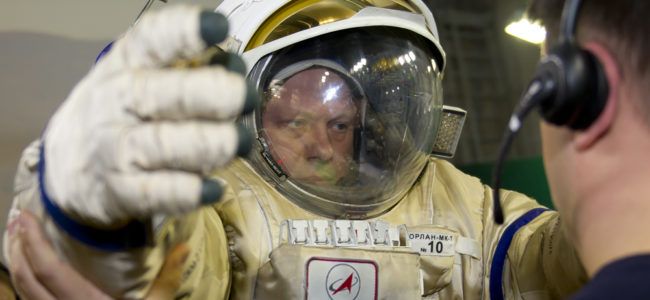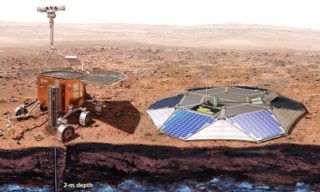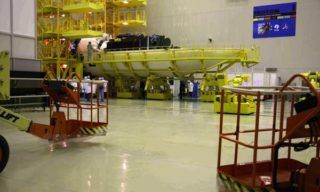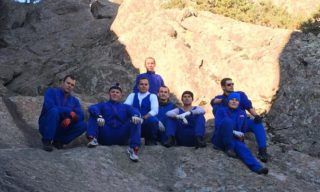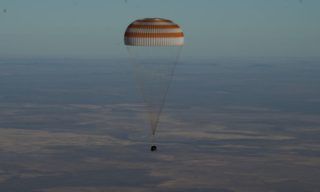GCTC Research and Test Centre conducted a series of experiments for the benefit of future interplanetary flights and Solar system exploration in which Roscosmos cosmonaut Oleg Artemyev who returned from the ISS on September 11 was taking part.
On September 12 the cosmonaut practiced manual controlled descent to the other planet’s surface with the help of TsF-18 Centrifuge. This experiment was aimed at assessing the possibility of manual landing after half a year space flight.
On September 15 Oleg Artemyev had the training on Egress-2 simulator performing standard operations on Egress to the simulated surface of other planet in Orlan spacesuit and working on it.
The aim of this experiment was to assess the cosmonaut’s ability to prepare the spacesuit and airlocking systems for extravehicular activities and practice several standard operations on the surface of other planet.
The cosmonaut moved and performed various operations under simulated conditions of subgravity on the basis of GCTC Egress-2 simulator.
Unique Egress-2simulator equipped with dynamic power-balancing weightlessness system was designed so that the cosmonauts could practice airlocking processes in Orlan-MK spacesuits. In the course of experiment the simulator was modernized for practicing extravehicular activities under conditions of simulated gravity (Mars gravity amounts to 0,38 Earth’s gravity). Thus Oleg Artemyev performed the following operations under these conditions:
– Spacesuit systems and other equipment control in the process of airlocking;
– Movements along the planet’s surface
– Ascent and descent along the walkway
– Electrical connector docking
– Antennas installation and removal
Besides Oleg Artemyev was the first to control virtual model of transport vehicle (rover) in the course of post-flight trainings and driving it along the set trajectory.
Rover virtual simulator is provided maintained by Institute for Bio-Medical Problems specialists.
The data received in the result of these experiments will be processed and systematized.
The experiments cionducted in GCTC prove the cosmonauts’ ability to perform operator activities after half a year flight under weightlessness conditions.




